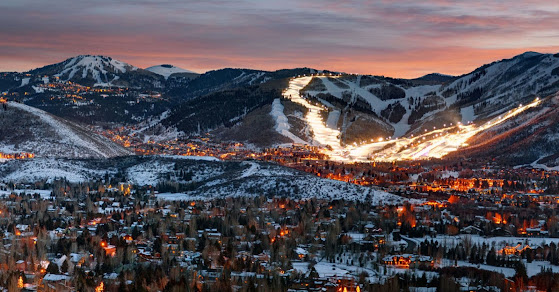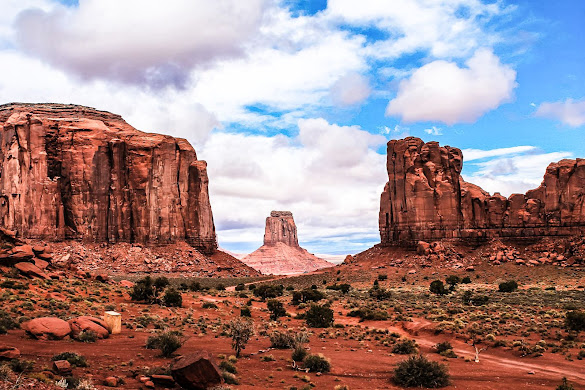Utah is truly an outdoor lover's dream. With natural wonders – including five national parks – and small towns with outdoor activities galore, Utah offers ample opportunities to reconnect with nature. To help you decide where to go for your next getaway, I took into account factors like attractions, value and accessibility to determine the best places to visit in Utah. Comment your favorite destination below.
BEST PLACES TO VISIT IN UTAH
1. Bryce Canyon National Park
Located in southwestern Utah, Bryce Canyon National Park occupies an otherworldly area composed of a dozen amphitheaters, or horseshoe-shaped canyons, on an eroded escarpment of the Paunsaugunt Plateau. The whimsical formations of limestone rock, created by erosion and rain, are entrancing to visitors who love to explore the slot canyons, windows, fins and, most notably, the tall, skinny spires called hoodoos. In fact, Bryce Canyon National Park boasts more hoodoos than any other place in the world.
The park was named after a Scottish immigrant, Ebenezer Bryce, who settled in the region with his family in 1875. Locals called the canyon where they lived "Bryce's Canyon" and the name stuck, even after they moved to Arizona in 1880. With elevations reaching 9,115 feet, Bryce offers panoramic views of three states and about 200 miles of visibility. Since it's exposed to very little light pollution, the park offers optimal conditions for stargazing. In fact, you can see 7,500 stars on a moonless night.
2. Arches National Park
Visiting Arches National Park is like visiting another planet, one with thousands of natural sandstone arches, red rocks and landforms in amazing configurations, and light that seems to change every moment. The way the shadows play across the arches makes the park especially intriguing for photographers, who are drawn to capturing its enchanting vistas at dawn and dusk in particular. But Arches National Park is not just a shutterbug's paradise.
Sitting 5 miles northwest of Moab, Utah, the park boasts 26 miles of scenic road and hikes for every level of fitness. Hikers can choose from a wide variety of trails, from short 20-minute walks to Balanced Rock and the Double Arch, to more remote and challenging treks through the Fiery Furnace and up to Delicate Arch. When you need to come back down to Earth, simply look up: the Colorado Plateau is home to some of the darkest skies in the contiguous 48 United States, yielding impressive views of the Milky Way.
3. Moab
Moab sits conveniently between Arches National Park and Canyonlands National Park, making it a great base for travelers looking to visit the two. Vacationers will find plenty to do in and around town, too, including outdoor activities like biking, hiking, off-roading and whitewater rafting. For a bird's-eye view of Moab's stunning red rock formations, visitors can go skydiving or enjoy a scenic flight in a plane or hot air balloon. After an active day, head to a local restaurant to satisfy your appetite and listen to some live music.
4. Park City
Park City is known for three things: skiing, snowboarding and the Sundance Film Festival. Located 35 miles southeast of Salt Lake City, Park City is easily accessible and home to a wide range of accommodations that attract throngs of vacationers during the winter season. Sandwiched between two premier resorts, Deer Valley and Park City Mountain, this former mining town sits in the shadow of the rugged Wasatch Mountain Range. In 2002, both resorts hosted events during the Winter Olympics, and the Utah Olympic Park, which sits just north of the main street, is still a major training facility for winter athletes, including the United States Ski Team.
But you don't have to be an Olympian to experience all that Park City has to offer. Stroll down the city's charming Historic Park City area or visit the High West Distillery and Saloon. For family fun, grab your warmest winter gear for an afternoon of snow tubing at Gorgoza Park. And after a long day schussing the slopes (or lounging in the lodge), enjoy the city's bustling après-ski scene.
5. Zion National Park
Named for the Hebrew word "refuge," Zion National Park – nestled in Utah's southwest corner – is no longer the quiet sanctuary it once was. In 2016, the park saw a record-breaking 4.3 million visitors, a 17 percent increase from its last record-breaking year in 2015. It's as if travelers stumbled upon a secret and can't get enough of the apricot-colored Zion Canyon, which they can view wading through its Virgin River or ascending Angels Landing, with each bend in the river or turn in the trail affording an even more breathtaking view. Plus, the blanket of stars that illuminates the night sky is a welcome nightcap to a day filled with active pursuits. And when it's time to come back from the refuge to reality, the 166-mile drive from Las Vegas or the 308-mile drive from Salt Lake City is just about the right amount of time to process all the beauty you just experienced.
6. Salt Lake City
Salt Lake City has long been a little mystical. Back in the early 19th century, pioneers believed the area's Great Salt Lake was inhabited by monsters and giants. This spooky legend faded until Brigham Young decided to make Salt Lake the home of the new Church of Jesus Christ of Latter-day Saints in 1847. Today, those who have spent time in Salt Lake will tell you that it's more than just a place of great faith, it's also a thriving cultural hub and an excellent home base for hikers and skiers.
Many visitors embrace the chance to learn about the Church of Jesus Christ of Latter-day Saints, spending time touring the beautiful religious sites in Temple Square. And even if you aren't interested in Salt Lake's heritage, the city is worth a visit for the views alone. The Wasatch and Oquirrh mountain ranges provide a stunning backdrop to the city skyline while the magnificence of the Great Salt Lake is nothing short of awe-inspiring.
7. Capitol Reef National Park
While Capitol Reef National Park may not be as well known as Utah's other national parks, it is just as breathtaking. The park's main attraction is the nearly 100-mile-long Waterpocket Fold, a buckling of the Earth's surface. Hiking trails and backcountry routes can also be found throughout the park. But remember, backcountry routes here are not official maintained trails, so you'll need to obtain a backcountry permit and exercise caution. Other popular activities include biking, horseback riding, rock climbing and canyoneering. If you'd rather exert less energy during your visit, opt for a scenic drive.
8. Monument Valley
Located in Utah and Arizona, Monument Valley features a red landscape that is easily recognizable. Here, you'll find Monument Valley Navajo Tribal Park, which houses sandstone towers and buttes that have appeared in movies like "Forrest Gump" and "Stagecoach." Must-do activities in the Utah section of the valley include hiking, horseback riding and whitewater rafting. You'll want to also save time for learning more about the park's Navajo history, which you can do while admiring the scenery during a guided vehicle or horseback tour with a Navajo tour operator.
9. Canyonlands National Park
This Utah national park is divided into four districts, each of which offers a different experience. The most accessible district is Island in the Sky; it rises more than 1,000 feet above the ground and provides spectacular views of the area. In the southwest corner of the park lies The Needles, a region with colorful sandstone spires, a historic cowboy camp and prehistoric rock art. The Maze's challenging, remote roads and hiking trails are best attempted by those with experience. And in the last district – where the Colorado and Green rivers form – you can explore via canoe or kayak.
10. Grand Staircase-Escalante National Monument
Grand Staircase-Escalante National Monument is a natural wonder that took millions of years to create. Occupying about 1 million acres, this protected area is divided into three units. The Escalante Canyon section is a hiker's dream, with backcountry trails that travel past waterfalls, arches and narrow canyons. The remote Grand Staircase region is where visitors will find Utah's most extensive network of slot canyons, as well as the colorful cliffs that give the monument its name. Separating the two areas is the Kaiparowits Plateau, which contains an impressive collection of fossils that are sure to delight paleontology enthusiasts.
11. Dinosaur National Monument
Dinosaur National Monument, a protected area on the Utah-Colorado border, is a must-visit destination for anyone interested in dinosaurs. Budding paleontologists can venture to the Utah side of the monument to see its array of fossils, many of which are on display inside the Quarry Exhibit Hall. After admiring the fossils, visitors can head to the Cub Creek Area, where several hiking paths – including the Fossil Discovery Trail – and pictographs and petroglyphs left behind by the Fremont people are located. The national monument also offers opportunities to camp, fish and go whitewater rafting.
12. Bonneville Salt Flats
Perhaps Utah's most unique natural attraction, the Bonneville Salt Flats are composed of 30,000 acres of hard, white salt. While you should stay off of the salt flats when they are wet, which is typically in spring, they are generally safe to drive on as long as you stay on existing roads and approved areas. In fact, every year, racing teams from around the world compete on the flats to set new land speed records. Plan on visiting in summer or fall if you want to witness one of these heart-pumping events.
13. Provo
Provo, Utah's third-largest city (by population), offers easy access to many of the state's national parks. Plus, visitors can go biking, rock climbing and whitewater rafting all within city limits. For a break from outdoor pursuits, vacationers can wander around the Brigham Young University campus, which is one of the country's largest private universities. The city is also home to museums, art galleries and the Peaks Ice Arena, a family-friendly venue with ties to the 2002 Winter Olympics.
I hope this information was helpful to you.
Make sure you share it with your family and friends.
Your thoughts are welcomed in the comments.













